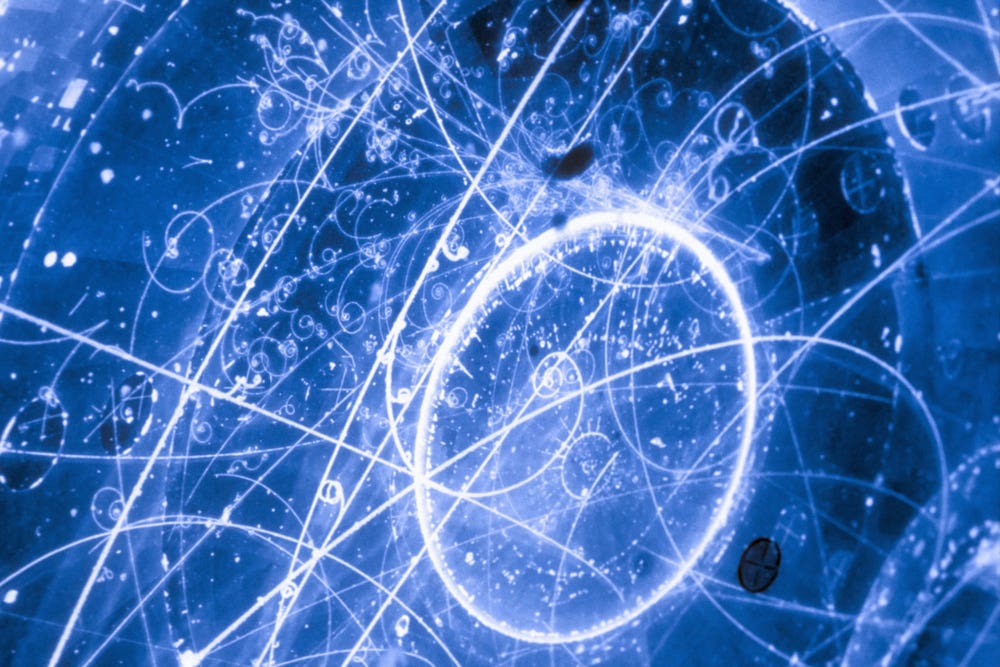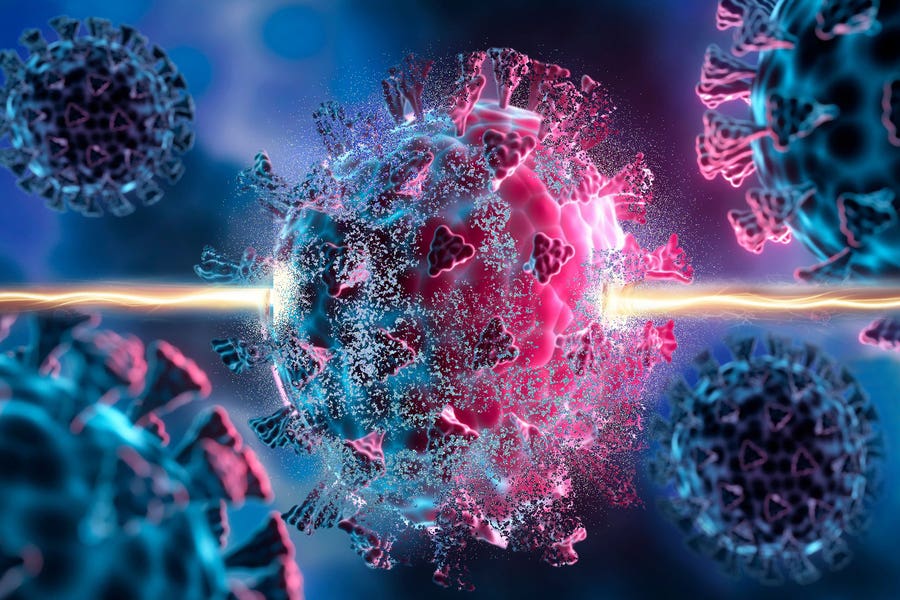Physicists record the most precise neutrino mass measurement ever
The KATRIN experiment has cut the limit on neutrino mass in half, revealing new clues about the universe’s most elusive particle.

KATRIN experiment narrows the limit on neutrino mass, pushing physics closer to answers beyond the Standard Model. (CREDIT: Science)
Neutrinos are tiny particles that barely interact with anything. Trillions of them pass through your body every second, yet you’ll never notice. They have no electric charge and barely any mass. Still, they are everywhere—in the Sun’s core, in exploding stars, even in radioactive materials here on Earth.
For scientists, neutrinos are a mystery worth chasing. They could hold the key to understanding why matter exists and why the universe looks the way it does. Neutrinos are thought to play a role in forming galaxies and shaping the structure of the universe. But perhaps their greatest mystery lies in their mass—or rather, how little of it they have.
The Standard Model of particle physics, our best guide to the building blocks of nature, once claimed neutrinos were massless. But that turned out to be wrong. Neutrinos do have mass—just an incredibly tiny one. So far, though, no experiment has measured that mass directly. That’s where the KATRIN experiment comes in.
KATRIN stands for the Karlsruhe Tritium Neutrino Experiment. It’s based in Germany and stretches nearly 70 meters, or about 230 feet—longer than a Boeing 747. Published in the journal, Science, the experiment uses a radioactive form of hydrogen called tritium, which naturally decays into helium. When this happens, it releases an electron and a neutrino.
By measuring the energy of the electron, scientists can figure out how much energy the neutrino took away. This helps them estimate the neutrino’s mass. The trick is, this has to be done with extreme accuracy. That’s why KATRIN includes one of the world’s most advanced spectrometers, which is 10 meters wide and filters out unwanted particles with precision.
KATRIN has already collected about 250 days of data between 2019 and 2021. That’s just one-fourth of its full data goal. Still, the results so far are impressive. In 2022, KATRIN set a new upper limit for the neutrino mass. With the latest measurements, that limit has been cut in half—now at just 0.45 electron volts. For comparison, an electron, the lightest charged particle, is about a million times heavier.
Related Stories
“With each campaign, we have gained new insights and further optimized the experimental conditions,” said Susanne Mertens from the Max Planck Institute and the Technical University of Munich. Her colleague, Kathrin Valerius, added, “For this result we have analyzed five measurement campaigns, totaling approximately 250 days of data collection.”
Getting to this level of precision takes more than just powerful machines. It also takes smart data analysis. That’s where artificial intelligence comes in. The data from KATRIN is extremely complex. Every measurement must be accurate to tiny fractions of an electron volt. “The analysis of the KATRIN data is highly demanding, as an unprecedented level of accuracy is required,” explained Alexey Lokhov, a co-coordinator for analysis.
To meet this challenge, the team uses state-of-the-art algorithms, including machine learning. These tools help spot patterns and reduce errors. “We need to employ state-of-the-art analysis methods, with artificial intelligence playing a crucial role,” added Christoph Wiesinger, another analysis lead.
Even with the tritium source active, the detectors register fewer than one electron per second near the most interesting energy level. That means background noise—like radiation from cosmic rays—must be blocked or filtered out. The system uses layers of shielding, vacuum pumps, and even liquid nitrogen-cooled copper to eliminate unwanted signals. A muon veto system and smart software further refine the data.
And because the experiment depends on the energy of electrons, KATRIN uses over 5,700 sensors to monitor conditions like temperature, magnetic fields, and gas purity. Calibration sources and an electron gun help confirm the system is working as expected.
KATRIN isn’t stopping anytime soon. The experiment will continue through at least 2025, with more data and improved analysis techniques. “Through the continuous improvement of the experiment and analysis, as well as a larger data set, we expect an even higher sensitivity,” the team shared.
Looking ahead, the project will upgrade in 2026 with a new detector system called TRISTAN. This next phase will allow scientists to search for an even more mysterious type of particle: the sterile neutrino. Unlike regular neutrinos, sterile ones wouldn’t interact through any of the known forces except gravity. If they exist, they could help explain dark matter, which makes up most of the universe’s mass but has never been directly seen.
KATRIN’s future also includes a long-term upgrade plan called KATRIN++, which will prepare for a next-generation setup. That could one day measure the neutrino mass even more precisely, possibly solving one of the biggest puzzles in physics.
Meanwhile, other efforts continue in parallel. Some scientists are using different elements like germanium or xenon to search for neutrinoless double beta decay. If this rare process is ever detected, it could show that neutrinos are their own antiparticles, known as Majorana particles. This would have huge implications for the nature of matter.
Even cosmology offers clues. By studying the structure of the universe and how galaxies formed, scientists have estimated that the total mass of all three types of neutrinos combined is probably less than 0.072 electron volts. That’s based on data from space telescopes and galaxy surveys.
Neutrinos challenge what we know about physics. Their ability to change “flavors” as they travel through space implies that they have different masses—something the original Standard Model didn’t predict. These flavor states are mixtures of mass states, a relationship described by the PMNS mixing matrix. This mismatch hints that there might be more to discover—possibly new forces, particles, or mass-generating mechanisms.
In particle physics, even tiny details matter. Discovering exactly how much mass a neutrino has could open the door to new theories. These theories might explain the origin of matter, why the universe didn’t collapse into nothing, or even what dark matter really is.
So far, the best direct limit comes from KATRIN. And with each day of data, it inches closer to the answer.
“Neutrinos are at least a million times lighter than electrons,” noted the team. “Explaining this enormous mass difference remains a fundamental challenge for theoretical physics.”
That challenge is exactly why the world is watching this 230-foot-long machine in Germany.
Note: The article above provided above by The Brighter Side of News.
Like these kind of feel good stories? Get The Brighter Side of News' newsletter.



